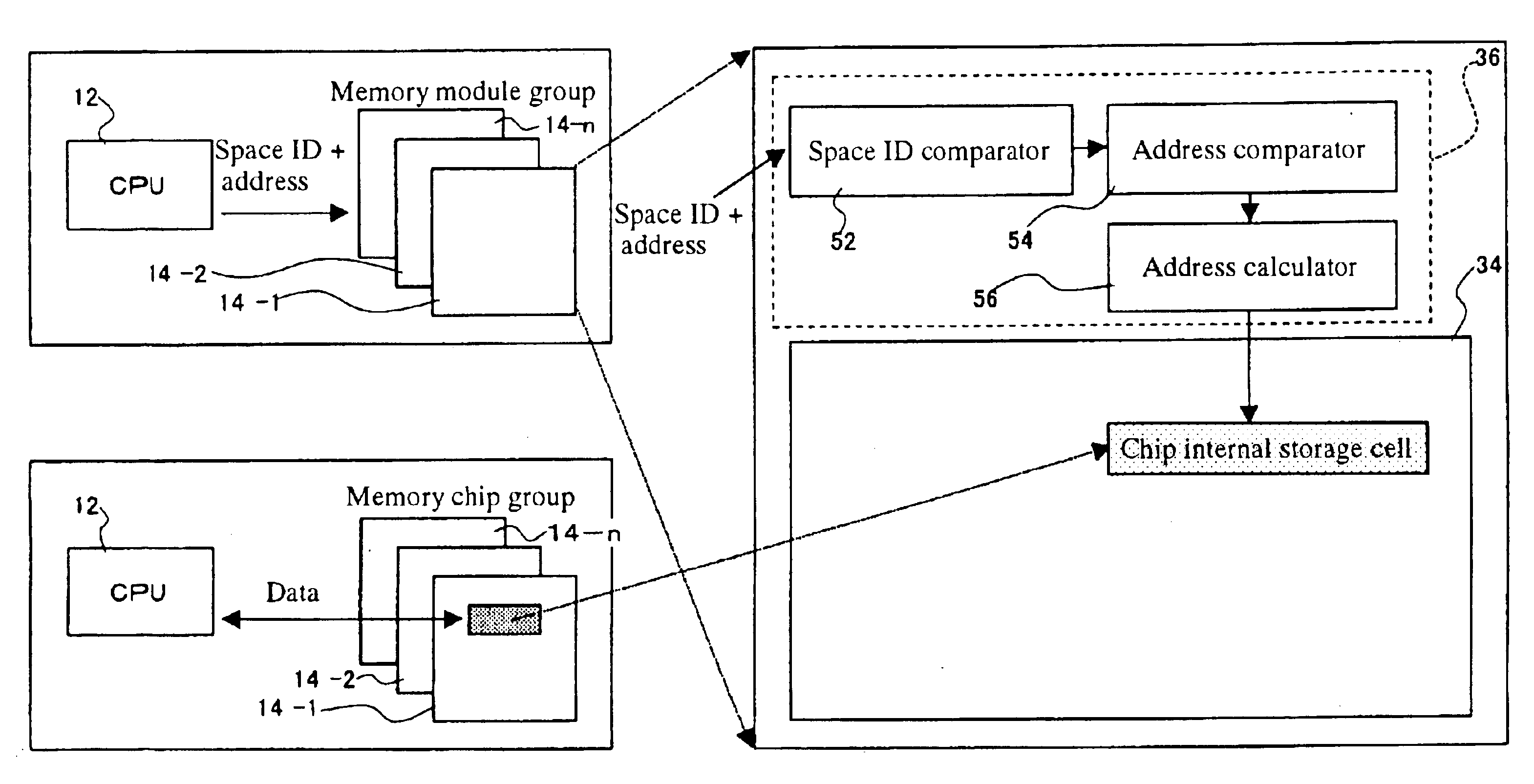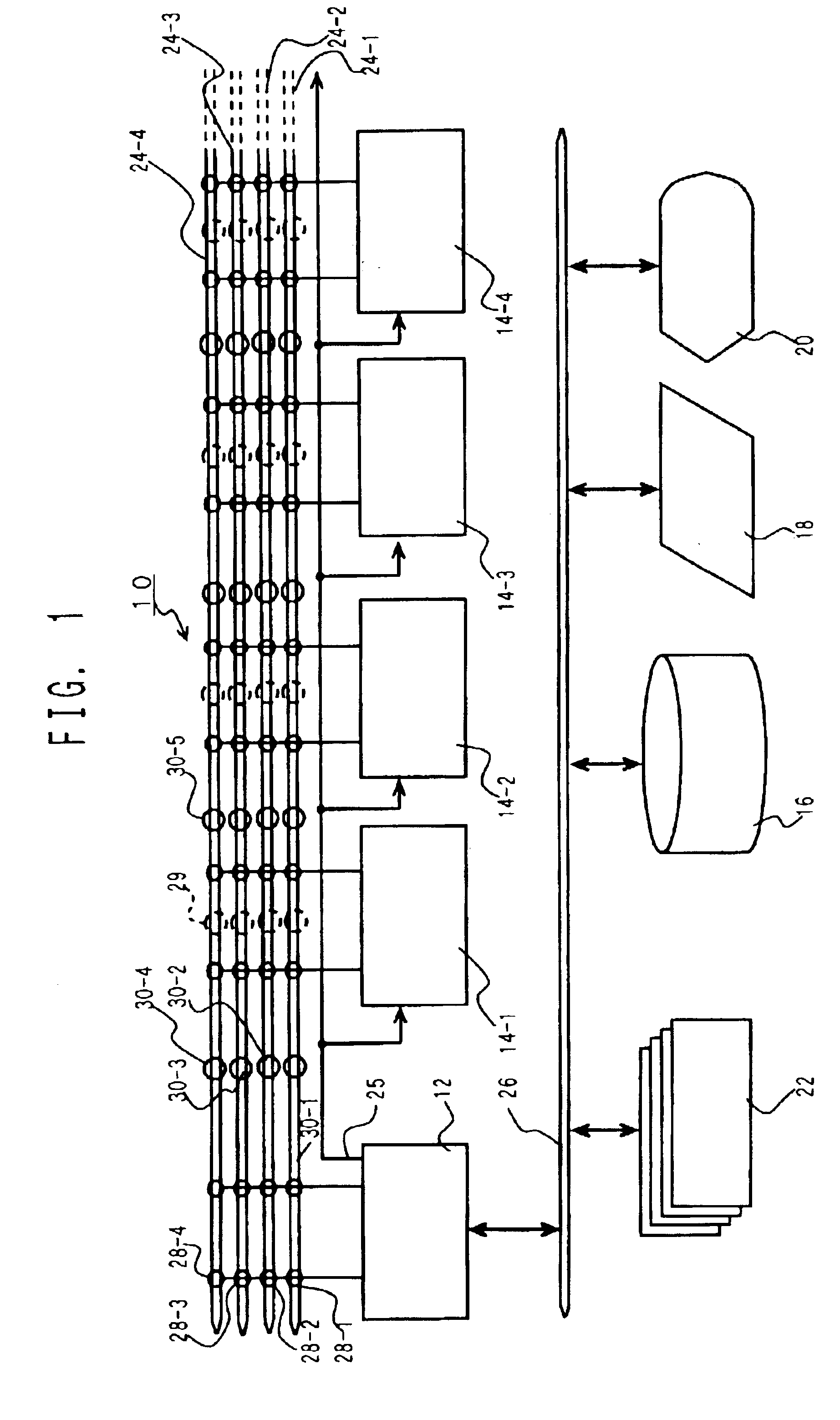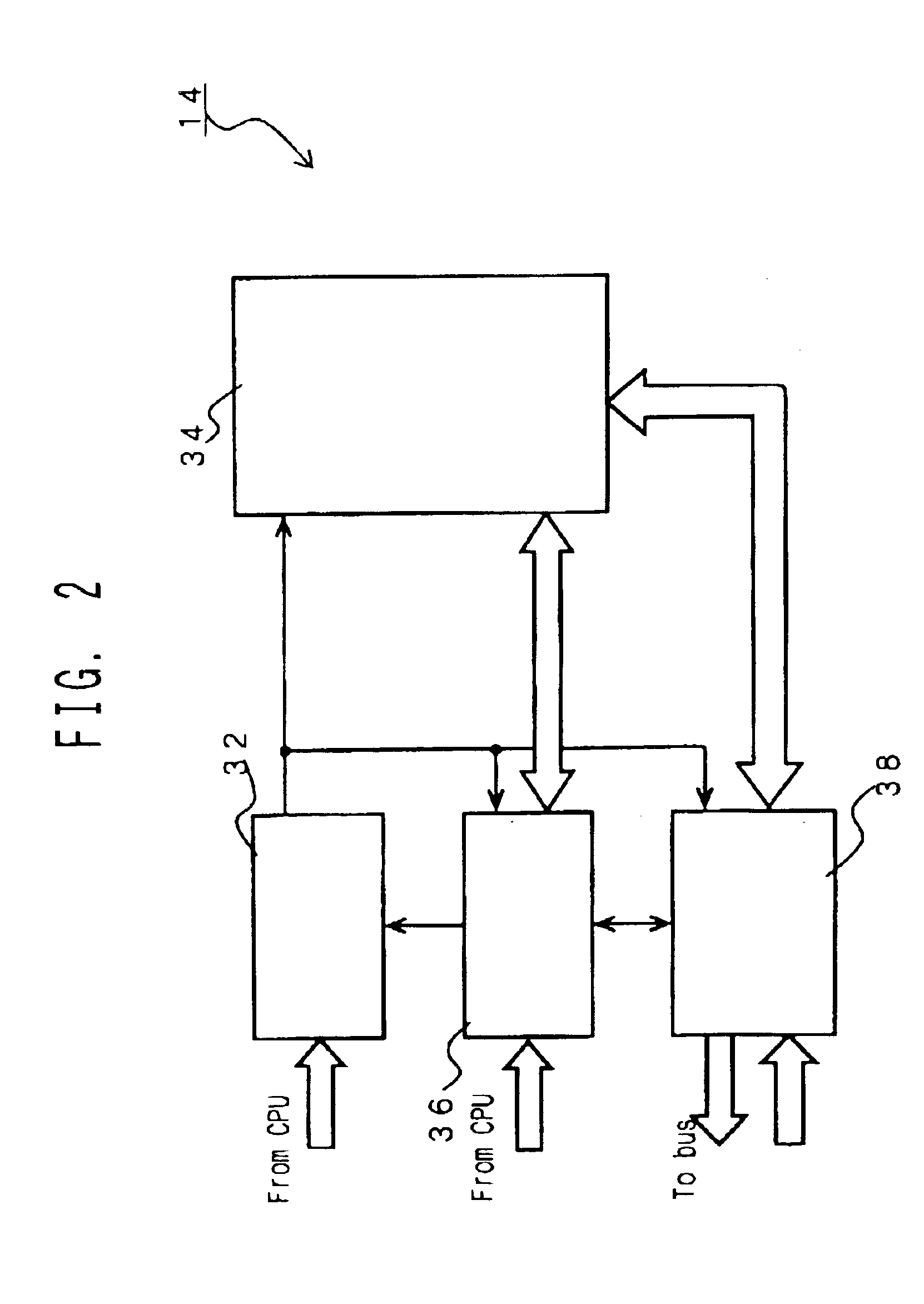Information processing system
a technology of information processing and memory type, applied in data processing applications, memory adressing/allocation/relocation, instruments, etc., can solve the problems of inability to increase the efficiency of processor usage, difficult to design using architectures, and difficult to construct practical systems that use more than 100 processors. achieve the effect of eliminating redundancy of elements
- Summary
- Abstract
- Description
- Claims
- Application Information
AI Technical Summary
Benefits of technology
Problems solved by technology
Method used
Image
Examples
embodiment 1
[Sorting (Embodiment 1)]
[0137]Here follows a description of sorting by means of a computer system 10 having such a configuration. Note that in the following description, each memory module is a memory module equipped with a processor and is thus referred to as a Processor Memory Module (PMM).
[0138]For ease in understanding, consider a case such as that shown in FIGS. 6A to 6C, wherein each of four PMMs holds two elements (surnames). As shown in FIG. 6A, a certain PMM (the first PMM 14-1) holds the surname “Smith” with an element subscript (record number) of “0” and the surname “Carter” with a subscript of “1.” The second PMM 14-2 holds the surname “Clinton” with a subscript of “2” and the surname “Johnson” with a subscript of “3.” Similarly, the third PMM 14-3 and fourth PMM 14-4 hold surnames corresponding to the subscripts shown in FIG. 6A. The same space ID is applied to the array consisting of these elements, and the processor 36 of each PMM uses its space ID control table to ma...
embodiment 2
[Other Sorting (Embodiment 2)]
[0178]Here follows a description of Embodiment 2 of the present invention. In the aforementioned Embodiment 1, all of the elements (elements within the former PMM group) are transmitted to the latter PMM group. However, as the array becomes larger, a large number of duplicate values may appear. With the technique according to the aforementioned Embodiment 1, elements that take the same value are sent on the bus many times. Depending on the case, one may think that repeatedly sending elements having the same value would be wasteful. Thus, in Embodiment 2, the number of elements within the PMM group is counted in advance, and by sending the number of elements together with that element to the latter PMM group, the repeated sending of duplicate elements over the bus is prevented.
[0179]For example, consider the case in which the sorting of four pairs of PMMs is complete and these pairs are connected to perform the sorting of eight PMMs. In this case, as sho...
embodiment 3
[Compiling (Embodiment 3)]
[0196]Here follows a description of Embodiment 3 of the present invention. In Embodiment 3, based on an array consisting of elements placed within each PMM, records, a value list without duplicate elements, and an array of pointers for specifying the value list from the record. In this specification, this process is called compiling.
[0197]For example, when the elements of a certain array are divided among four PMMs (PMM 1 through PMM 4), it is sufficient to connect the PMMs as shown in FIG. 32. As shown in FIG. 32, the input / output pins (I / O) of PMM 1 through PMM 4 are connected by the first bus (see symbol 3201) and on the other hand, the output pins (I) of PMM 1 through PMM 4 and the input pins (I) of another PMM “k” are connected to the second bus (sec symbol 3202).
[0198]The first bus is used for exchanging information with the PMM group made up of PMM 1 through PMM 4, while the second bus is used for giving the elements and their redundancy to another P...
PUM
 Login to View More
Login to View More Abstract
Description
Claims
Application Information
 Login to View More
Login to View More - R&D
- Intellectual Property
- Life Sciences
- Materials
- Tech Scout
- Unparalleled Data Quality
- Higher Quality Content
- 60% Fewer Hallucinations
Browse by: Latest US Patents, China's latest patents, Technical Efficacy Thesaurus, Application Domain, Technology Topic, Popular Technical Reports.
© 2025 PatSnap. All rights reserved.Legal|Privacy policy|Modern Slavery Act Transparency Statement|Sitemap|About US| Contact US: help@patsnap.com



